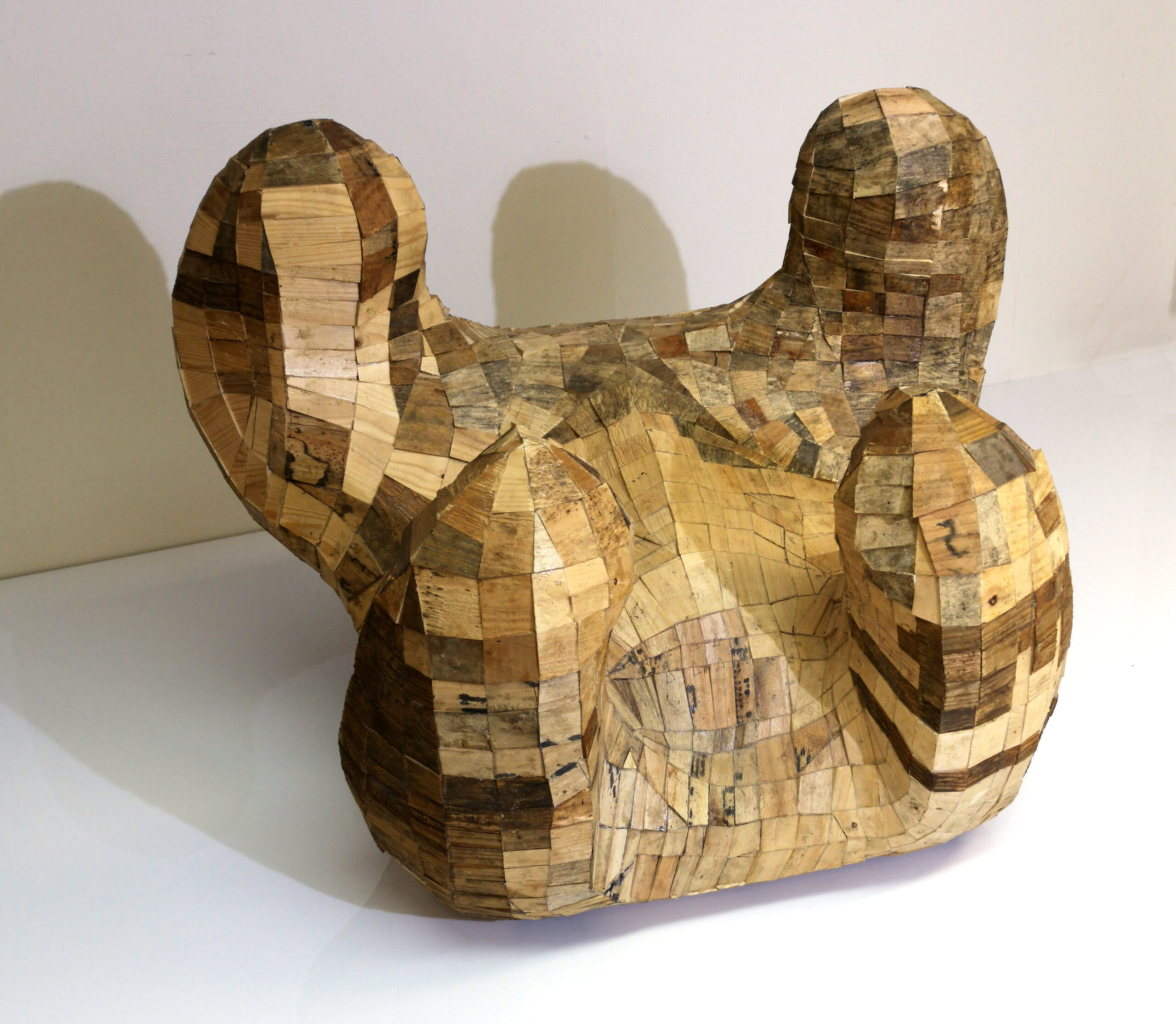SINCE 2000, ARTIST AND DESIGNER MAX JUNGBLUT HAS BEEN WORKING STEADILY ON AN EVER-EXPANDING OEUVRE OF HIGH-END DESIGN PIECES, IMPRESSIVE SPATIAL OBJECTS AND AUTONOMOUS VISUAL INSTALLATIONS, THROUGH WHICH HE INVESTIGATES THE BORDERS AND TENSIONS BETWEEN THE BUILT ENVIRONMENT AND THE NATURAL WORLD, BETWEEN THE INDUSTRIAL SHAPING OF OUR SURROUNDINGS AND THE CREATIVE POWER OF ARTISAN CRAFTSMANSHIP.
The early works within this exploration are characterized by the re-use of old materials, often discarded within industrial processes, and providing them with a new function and a new aesthetics. Design pieces like The Entrance (2008) and The Presence (2011), the iconic Club series of chairs (2015), but also the more autonomous works like Spatial Object (2009) and Reconciliation (2015-2016) can be instantly recognized by the use of old tile laths, a material that is abstracted from the natural realm and subsequently made invisible as part of constructions to carry roof tiles. By using this material as a ‘skin’ for new design pieces and objects, Jungblut plays with this tension between hiding and revealing and reworks industrial materials into more natural forms and shapes. On the one hand, the distinctive use of tile-laths reveals a desire for durability and sustainability, on the other hand it could also be considered a desire for quality: the age of the structures from which the wood was taken ranges between 100 and 200 years. Through the process of preservation undertaken while finishing off the pieces, the sustainability of this wood is extended by another hundreds of years, while at the same time giving it its distinctive contemporary character.
Although all pieces by Jungblut breathe the same love for nature and natural forms, the designer embarks on a more radical break with references to functionality in more recent works, instead focusing more on depictions of images from nature and increasingly appealing on our faculties of memory and imagination. Examples of this more autonomous path within his artistic practice are the immense sculpture La Renaissance (2016-2017), which alludes to a leaf, a raindrop, a seed, a willow or a mother with child. The resulting piece looks monumental, yet vulnerable. The same depiction of natural imagery is seen in works such as The Seedling (2017) and My World (2018). In his most recent works, Jungblut is even incorporating this natural imagery in his high-end design pieces , creating a new hybrid model between design pieces and autonomous works.
Jungblut often presents these sculptures and objects in public space. This way, the spectator is invited to reflect on the production processes that natural materials oftentimes undergo. Furthermore, the work offers a reflection on the fact that these materials are usually hidden from sight through their use in industrial constructions. As such, the sculptures question the demarcation between ‘natural’ and ‘artificial’ beauty. They seem to take the form of a totem or altar, but in a way in which it is not clear what we praise nowadays; nature, the constructions we make from nature, or both.
While continuing to work on pictorial objects and sculptures that represent nature, the designer simultaneously further develops his applied design pieces. An exciting new trajectory within this respect is his long-term research project Searching Club (2016-ongoing). Starting with a well-thought-out design, which evidently shows traces of earlier pieces from the Club series, the design features are meticulously marked and copied for a new piece. However, the artist introduces changes in each successive chair in an on-going quest to arrive at the perfect prototype, without actually having this as a final goal. The resulting alternations of the original design are at times quirky and playful, moving feet, back or seat in unexpected directions, as is the case in the piece Never Thought That A Wooden Chair Could Be So Fucking Comfortable (2018). Other variations in the Searching Club series involve using new techniques such as 3D printing, or introduce new materials such as leather, iron and fabric. A third strand within the series is more abstract and conceptual, questioning the practical function of a chair, as is the case with the piece This Is Not A Chair (2018). In this way, the quest of searching for the perfect chair design, without ever arriving there, opens up a space for thinking about production processes and the artistic effort that always underlies such endeavours.
Contemplating the oeuvre of Max Jungblut in its entirety, one might be tempted to distinguish between his artistic output as a sculptor working in public space and his design-driven enterprises working on interior design pieces, but this would not do justice to his practice as a craftsman. Jungblut constantly revises old pieces and both trajectories undoubtedly influence each other in many ways. In the industrial gardens of Max Jungblut, the whole becomes bigger than the sum of its parts.
– Guus van Engelshoven.


